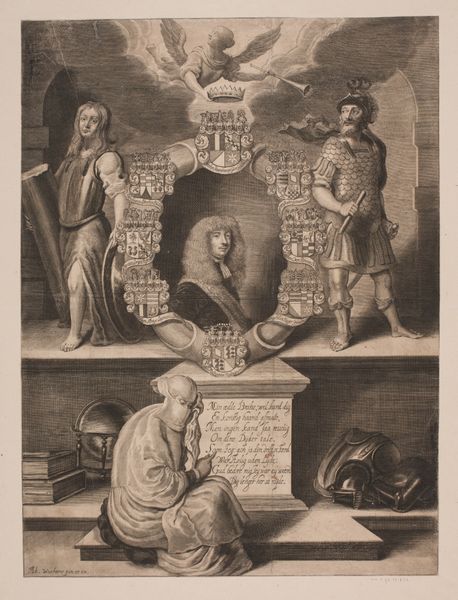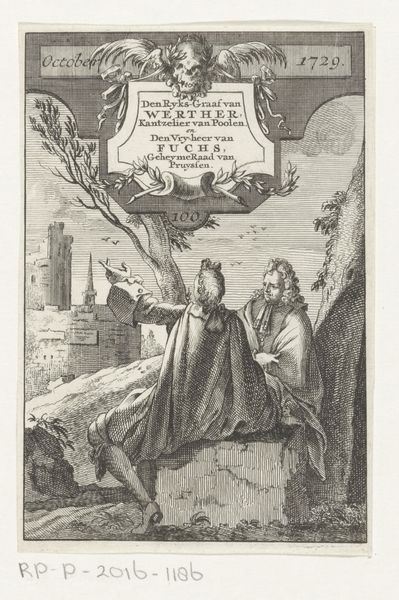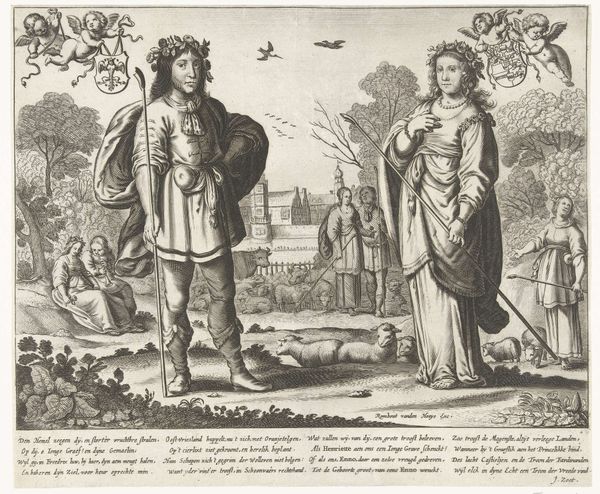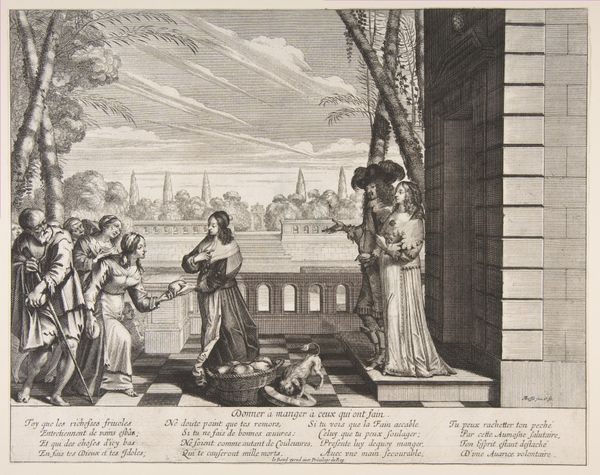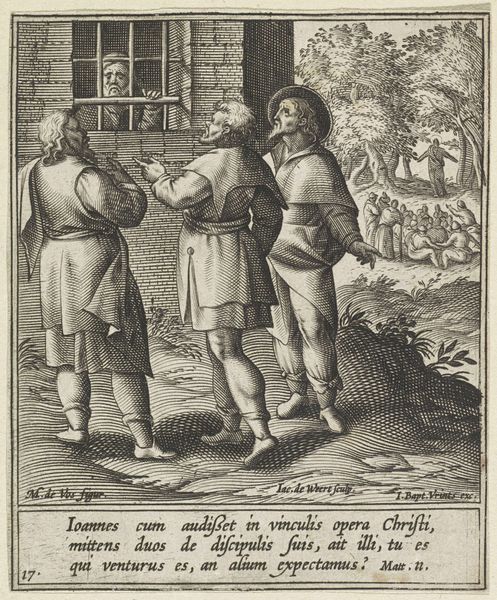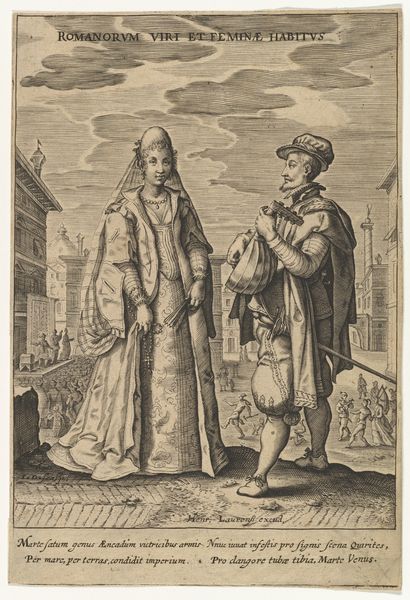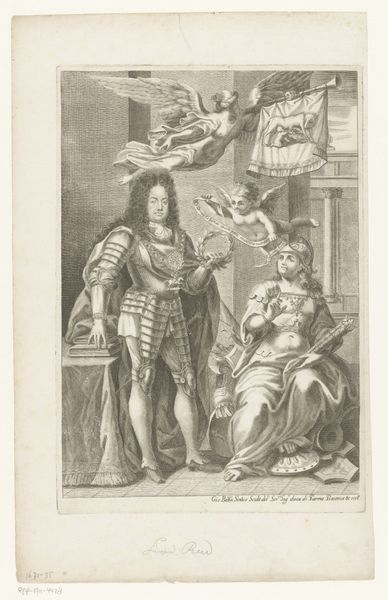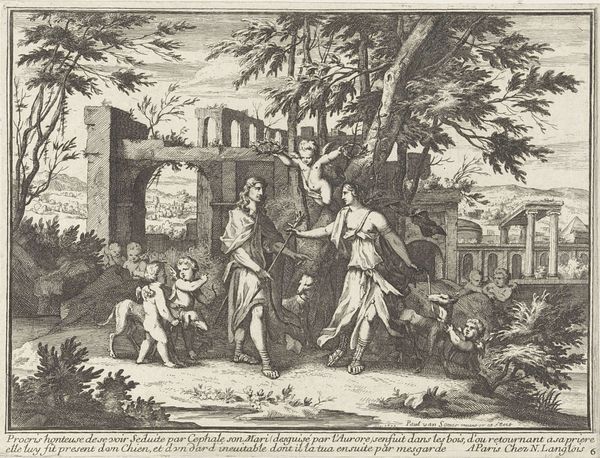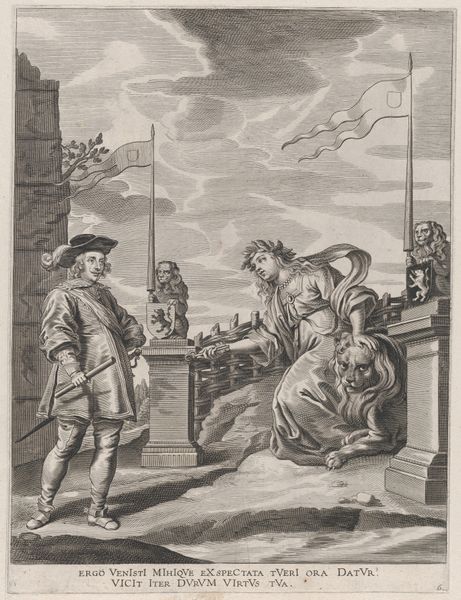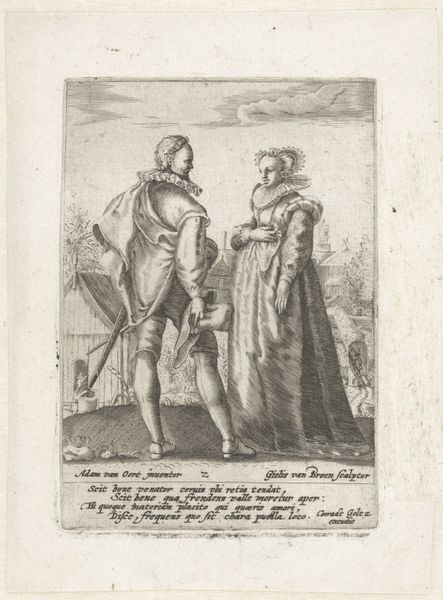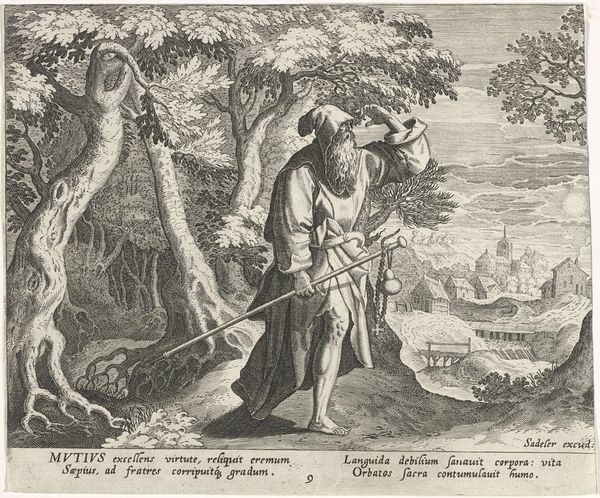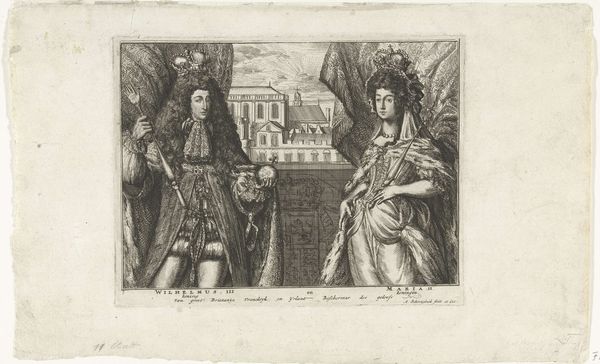
His most Sacred Majesty King Charles the first giving his Royal Orders to his Secretary of War, Sir Edward Walker, Knight, concerning the great Rebellion 1705
0:00
0:00
drawing, print, engraving
#
portrait
#
drawing
#
baroque
# print
#
pencil drawing
#
men
#
history-painting
#
engraving
Dimensions: Sheet: 11 1/8 × 13 1/2 in. (28.2 × 34.3 cm)
Copyright: Public Domain
Curator: Let’s turn our attention to this engraving from 1705, titled "His most Sacred Majesty King Charles the first giving his Royal Orders to his Secretary of War, Sir Edward Walker, Knight, concerning the great Rebellion." Editor: It strikes me immediately as a surprisingly intimate scene set against the backdrop of what appears to be military encampment; the scale feels at odds with the inherent chaos of war, wouldn’t you say? Curator: I would agree it’s quite intimate for an image intended to portray royal authority. Consider the detail etched into the king’s face and clothing versus the flat application of detail given to the troops. The engraving’s technique uses varied line weights and crosshatching. We see that hierarchy reflected formally as well. Editor: Right, and if we zoom in, there’s so much charged symbolism packed in here. We have Charles issuing orders – actively participating in suppressing a popular rebellion, the English Civil War—and he's juxtaposed against the Secretary who is holding an official instrument, maybe ready to deliver that instrument and make the document legally binding for deployment on an opposing army? What sort of justification did he present to those ordered to suppress this revolt? What do the symbols on that war drum imply about that justification? Curator: One could argue those finer details lend themselves to an allegorical reading of the subject matter itself, almost as if it serves as a justification. Note the formal bearing of King Charles, who is separated from a battlefield environment, a setting more amenable to portraits of Baroque sovereigns, despite what you noted, which I understand, I consider that to make the statement on this specific point, that sovereignty requires him to engage, at this moment, so completely within. Editor: The inscription tells us that Charles saw his actions as sacred and authoritative, that it was even in reaction to what *he* considered rebellion. It completely disregards any arguments levied against the monarchy during a pivotal period of English history. Was there even popular revolt during this moment that justified him taking action here? Curator: Your perspective is critical for us to keep in mind: context. However, the technical rendering itself demonstrates incredible proficiency. Editor: True, there’s skillful detailing in a scene ripe with tension and unresolved power dynamics. I see both conflict and complicity in this piece; its historical subject opens up the complexities of legitimacy in ways that invite continued interrogation today. Curator: And when focusing solely on the masterful rendering itself, this baroque piece stands as a clear depiction of form and technique with precision that invites conversation across generations of artisans.
Comments
No comments
Be the first to comment and join the conversation on the ultimate creative platform.
